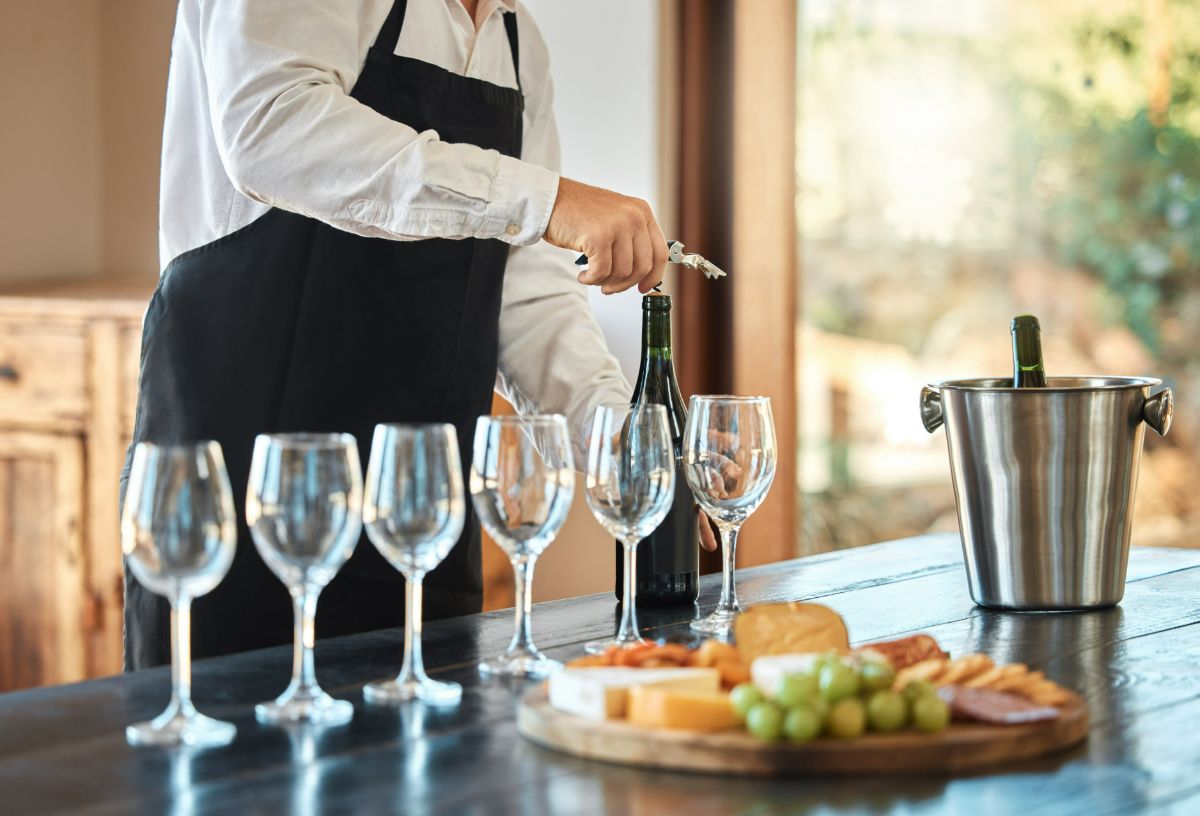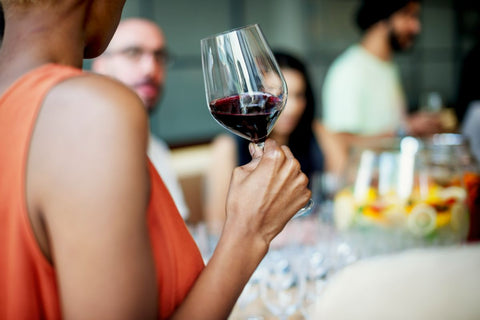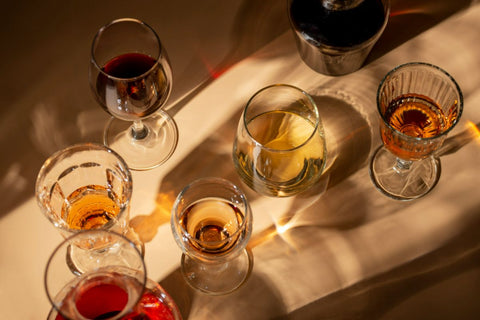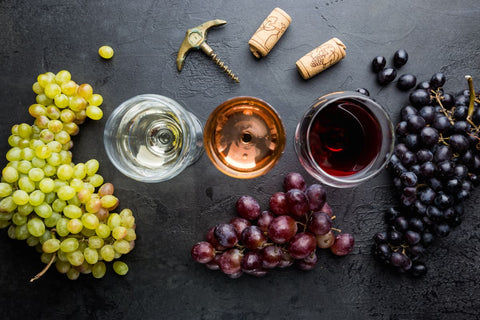How to drink wine properly?
- Choose the right type of glass
- Select the ideal serving temperature
- Indulge in the fragrant first
- Savor the sip
- Find the right food to pair
Overview
- We provide beginners with a guide on how to enhance the wine-drinking experience.
- It all starts with choosing the right type of wine glass and serving the wine at an ideal temperature. The shape of the glass impacts how the wine interacts with your tongue. On the other hand, finding the right temperature allows the wine to release its hidden layers of fruit, floral, and earthy scents.
- We provide step by step procedure of how to sniff, taste, and observe the different flavors left in your mouth.
Learning how to drink wine properly is crucial for beginners as it enhances the overall experience. It deepens appreciation, refines the palate, and allows for a more nuanced understanding of wine's diverse flavors.
So, if you’re looking to elevate the entire drinking experience, read on to learn how to take a sip of your favorite bottles of red and white – step by step.
Choose the Right Type of Glass
Choosing the right type of glass for your wine can influence how you discern its aromas and flavors. The rim's shape impacts how the wine touches your tongue, affecting its perceived texture and weight. Here are some of your options:
- Red Wine Glass:
- Design: Typically has a rounder, larger bowl to allow aeration.
- For: Full-bodied red wines like Cabernet Sauvignon, Merlot, and Shiraz.
- White Wine Glass:
- Design: Upright with a narrower bowl to preserve the delicate aromas.
- For: Crisp white wines such as Sauvignon Blanc, Pinot Grigio, and Chardonnay.
- Sparkling Wine Glass (Flute):
- Design: Tall and narrow to preserve bubbles and focus the aromas.
- For: Sparkling wines like Champagne, Prosecco, and Cava.
A wider rim directs the wine to the tip of your tongue, emphasizing sweetness and acidity. While a narrower rim channels the wine to the sides and back of your tongue, highlighting tannins and bitterness.
This deliberate consideration of glass shape enhances the overall tasting experience by engaging specific taste receptors, allowing for a more comprehensive exploration of the wine's sensory profile.
Select the Ideal Serving Temperature

The right temperature allows volatile aromatic compounds in the wine to properly evaporate and reach your nose. Cooler temperatures hold back these fragrant notes, while overly warm wines overwhelm your senses with alcohol. Find the ideal temperature, and the wine reveals its hidden layers of fruit, floral, and earthy scents, creating an enticing prelude to the taste.
Different grape varietals and styles have ideal temperature ranges that showcase their best qualities.
- Cabernet Sauvignon:
- Ideal Temperature: 60-68°F (15-20°C)
- Note: Slightly cooler than room temperature for optimal expression of its flavors
- Chardonnay:
- Ideal Temperature: 45-50°F (7-10°C)
- Note: Served slightly chilled to enhance its crispness and fruity characteristics.
- Pinot Noir:
- Ideal Temperature: 55-62°F (12-17°C)
- Note: Served slightly below room temperature to emphasize its delicate flavors and aromas.
Indulge in the Fragrant First
The aroma is like the first chapter of the wine's story. It offers hints about its grape varietal, region, and production methods. When you get a sniff of the wine, the olfactory receptors in your nose send signals to your brain, triggering memories and associations that enrich the taste experience before the first sip touches your tongue.
Here’s what you can do:
- Swirl the Wine: Hold the wine glass at the base and gently swirl it. This releases the aromatic compounds in the wine.
- Observe the Wine: While swirling, observe the "legs" or "tears" that form on the sides of the glass. This can indicate the wine's alcohol content.
- Insert Your Nose: After swirling, place your nose into the glass and take a gentle sniff. Note the initial aromas.
- Swirl Again: Swirl the wine once more and then take a deeper sniff. This helps to capture more nuanced aromas.
- Analyze the Aromas: Identify the various aromas. Pay attention to fruit, floral, herbal, and other scents.
- Consider the Intensity: Assess the intensity of the aromas. Is the scent light and subtle or bold?
Savor the Sip

Wine tasting goes beyond just drinking—it's about creating an experience. Taking the time to savor each sip allows you to relish the moment.
Remember to take small sips. When you take the first sip, let the wine coat your palate. Hold it in your mouth for a few moments before swallowing. This will allow you to notice the different flavors and textures. Ask yourself: is it fruity, oaky, spicy? Is it light, medium, or full-bodied?
After swallowing, this is when you take note of the finish of the wine. This refers to the taste that lingers after. Does it vanish quickly or does it linger? Is it smooth or does it have a bite?
Find the Right Food to Pair
Finding the right wine and food pairing is about achieving balance. The right pairing can elevate the flavors of both the food and wine, creating a harmonious balance that enhances the taste sensations. For beginners, it provides a practical way to explore and appreciate the diverse world of wines, helping them discover how different varietals complement various dishes.
Take, for instance, a medium-bodied white like Casillero Del Diablo Reserva Especial Chardonnay; it beautifully pairs with a delicate fish in a creamy sauce.
On the other hand, a glass of Josep Ferrer Garnatxa Negra-Cabernet Sauvignon complements a hearty steak, ensuring a delightful balance where neither the food nor the wine steals the show.
This knowledge adds an extra layer to the enjoyment of both the meal and the wine.
Key Takeaway
Know that we’ve walked you through the steps of how to drink wine properly, you can try it for yourself. Invite some of your friends over and cook a meal (that pairs well with the drinks, of course), and enjoy.
You can get all the wine you need from us here at Ralph’s Wine & Spirits! Shop at our online store today to discover the rich flavors, and exquisite craftsmanship that our collection brings to your glass.



